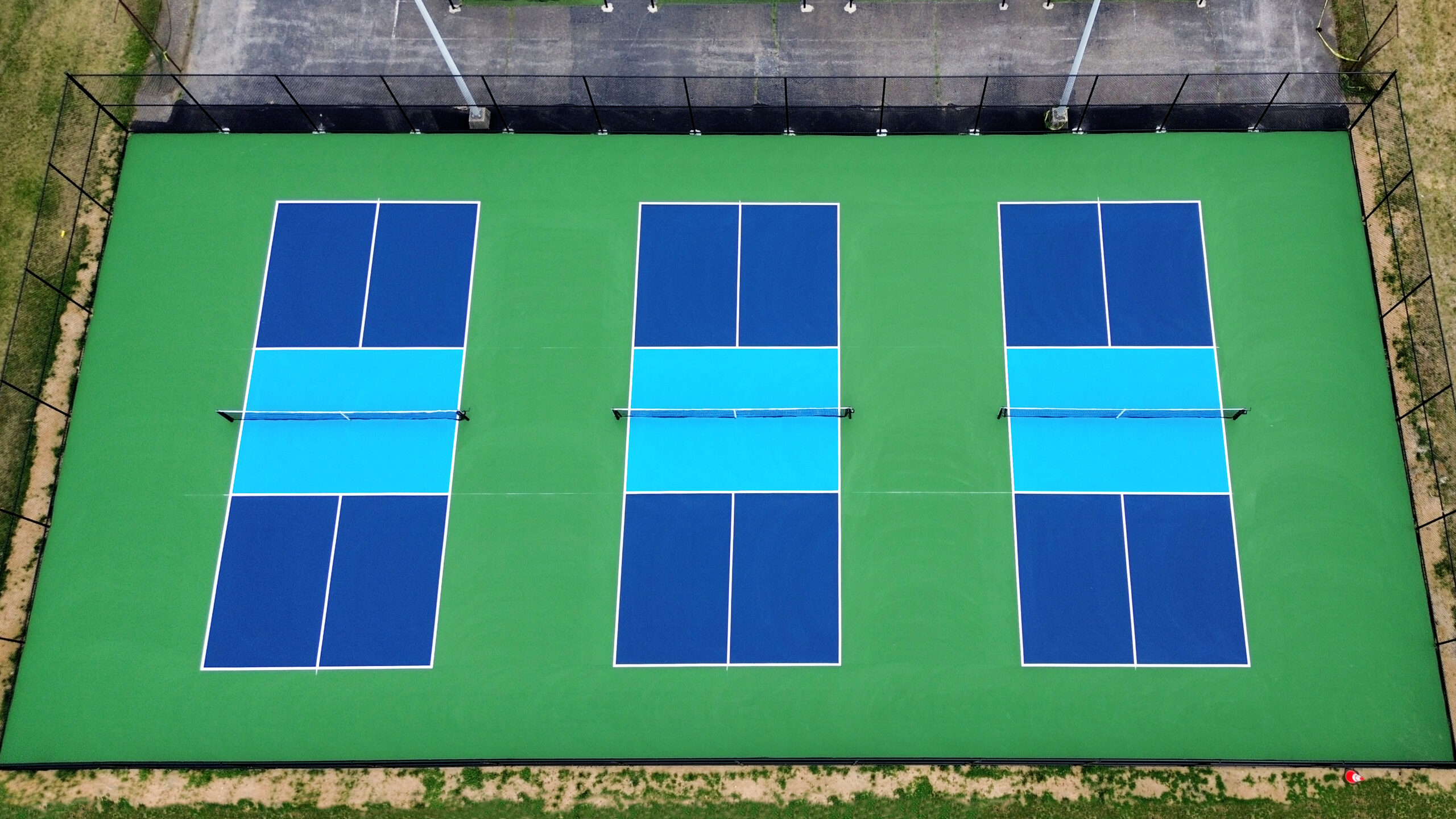Affordable Pickleball Court Construction for Residences and Communities
Lasting Practices in Pickleball Court Building You Must Know
As the popularity of pickleball continues to climb, so too does the requirement for sustainable techniques in court building. The effect of these methods extends much beyond the court itself.
Picking Eco-Friendly Products
Picking environmentally friendly materials is an important action in the building and construction of sustainable pickleball courts. The selection of sustainable materials not only lessens ecological influence yet also enhances the long life and performance of the court. Key materials include recycled rubber for the surface area, which provides superb toughness and shock absorption while drawing away waste from land fills.
In addition, making use of locally sourced materials minimizes transport discharges and supports regional economies. Pickleball court construction. For instance, making use of indigenous woods for secure fencing and seating can supply a lasting visual while making certain durability against the elements.
Including absorptive materials for court structures can better add to sustainability by permitting all-natural water drainage and minimizing runoff. These options not only protect neighborhood environments yet likewise advertise healthier play environments.
Effective Drainage Solutions
While the option of environment-friendly materials is essential, applying efficient drain remedies is equally essential for maintaining sustainable pickleball courts. Appropriate drain not just protects the court surface area from water damage but additionally reduces disintegration and drainage, promoting environmental integrity.
Reliable water drainage systems can consist of absorptive paving, which enables water to infiltrate the ground rather than merging on the surface area. This lowers the chance of standing water, which can bring about mold and mildew and other maintenance concerns. In addition, including purposefully put drain channels and swales can direct excess water away from the court location, making certain a dry playing surface area and preventing soil erosion.
Using indigenous plants in the landscaping around the courts can further enhance drain by taking in excess water and minimizing runoff. These plants call for less watering and advertise biodiversity, lining up with sustainable methods.
Furthermore, it is vital to on a regular basis maintain the drain system to guarantee its long-lasting performance. This includes clearing up debris and monitoring for blockages. By prioritizing efficient drainage remedies, pickleball court contractors can significantly add to the sustainability and durability of the center, ultimately benefiting both gamers and the setting.
Energy-Efficient Lights Options
As the demand for pickleball remains to grow, incorporating energy-efficient lights options into court layout has actually become progressively crucial for sustainability. Typical lighting systems commonly eat too much power, adding to greater functional prices and environmental influence. Consequently, adopting modern-day, energy-efficient technologies is important for both brand-new buildings and remodellings.
LED (Light Emitting Diode) lighting attracts attention as a top option her comment is here due to its long life and power cost savings (Pickleball court construction). Compared to traditional lighting, LEDs utilize approximately 75% less power and can last as much as 25 times much longer, substantially decreasing upkeep expenses. The directional nature of LED lights lessens light contamination, ensuring that illumination is focused on the court instead than bordering locations.

Sustainable Surface Alternatives
Checking out lasting surface area choices for pickleball courts has actually gained traction among gamers and builders alike. The focus on eco-friendly materials not only aligns with the expanding ecological recognition yet additionally improves the performance and sturdiness of the courts.
This material gives exceptional recommended you read shock absorption, minimizing the threat of injuries for players while advertising sustainability. These ceramic tiles are easy to replace and install, and their convenience enables for different court arrangements.
All-natural turf courts are additionally emerging as a sustainable choice, advertising biodiversity and reducing the warmth island effect. However, they need normal maintenance and water, which may not align with all sustainability goals.

Water Preservation Techniques

Another reliable technique entails the installment of rainwater harvesting systems. These systems save and collect rain for usage in preserving court surface areas and landscape design. This method not just conserves drinkable water yet likewise lowers reliance on local resources.
In addition, employing drought-resistant landscape design around the courts is important. Native plants call for much less water and are much better adjusted to local climate conditions, therefore reducing total water consumption. Additionally, using effective irrigation systems, such as drip watering, ensures that water is provided directly to plant roots, reducing evaporation and waste.
Final Thought
Integrating lasting techniques in pickleball court building dramatically contributes to environmental conservation and source performance. By prioritizing these methods, the building of pickleball courts can straighten with broader environmental goals while advertising long life and functionality within communities.
As the appeal of pickleball proceeds to rise, so too does the requirement for lasting methods in court building and construction.Picking eco-friendly materials is a crucial action in the building of sustainable pickleball courts. By prioritizing energy-efficient lighting options, pickleball court erectors can add to an extra sustainable future while meeting the needs of gamers and stakeholders alike.Integrating sustainable surface area options not only enhances the efficiency of pickleball courts but also paves the way for implementing reliable water conservation techniques.Including sustainable practices in pickleball court building and construction substantially adds to environmental conservation and resource efficiency.